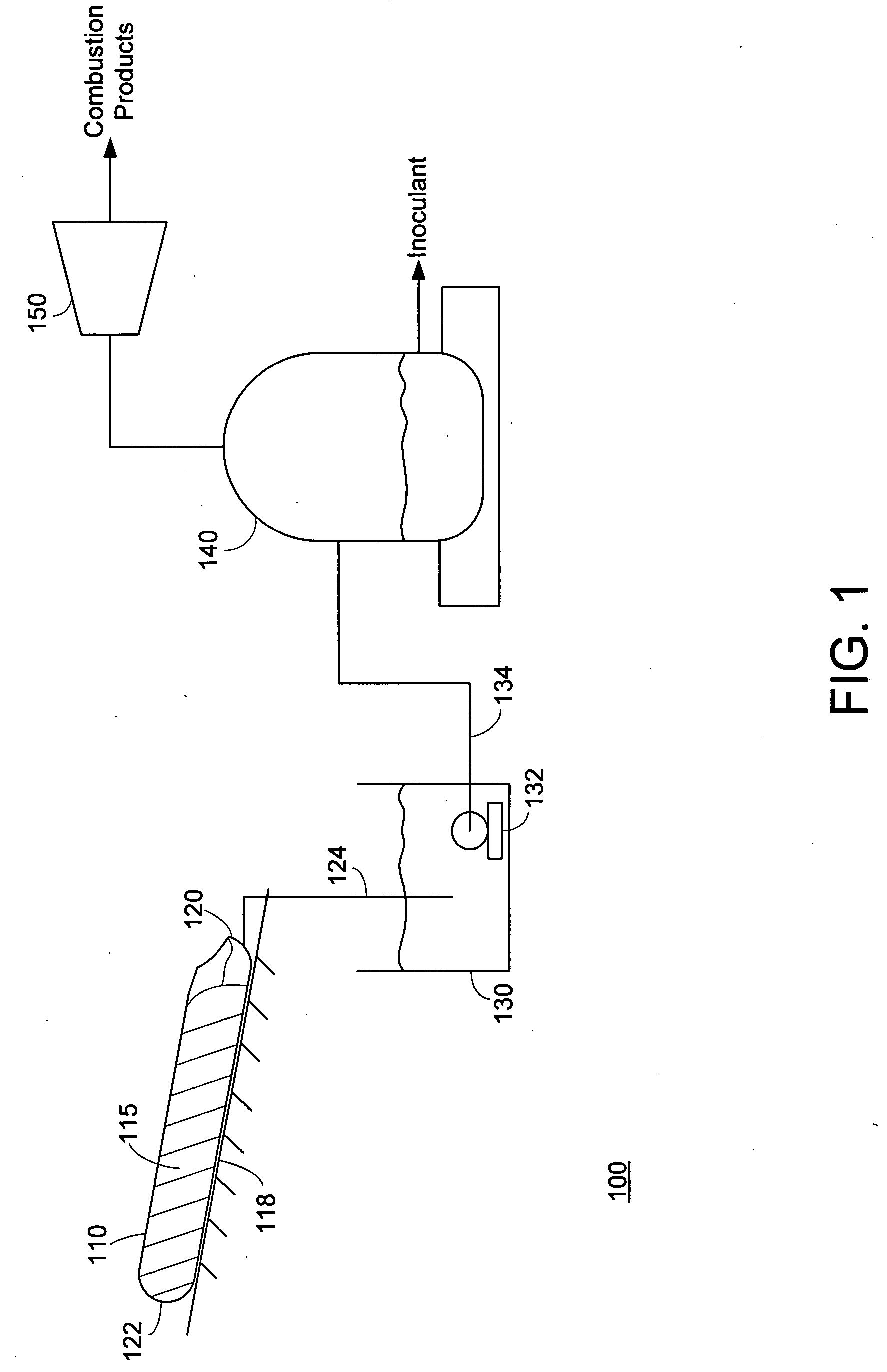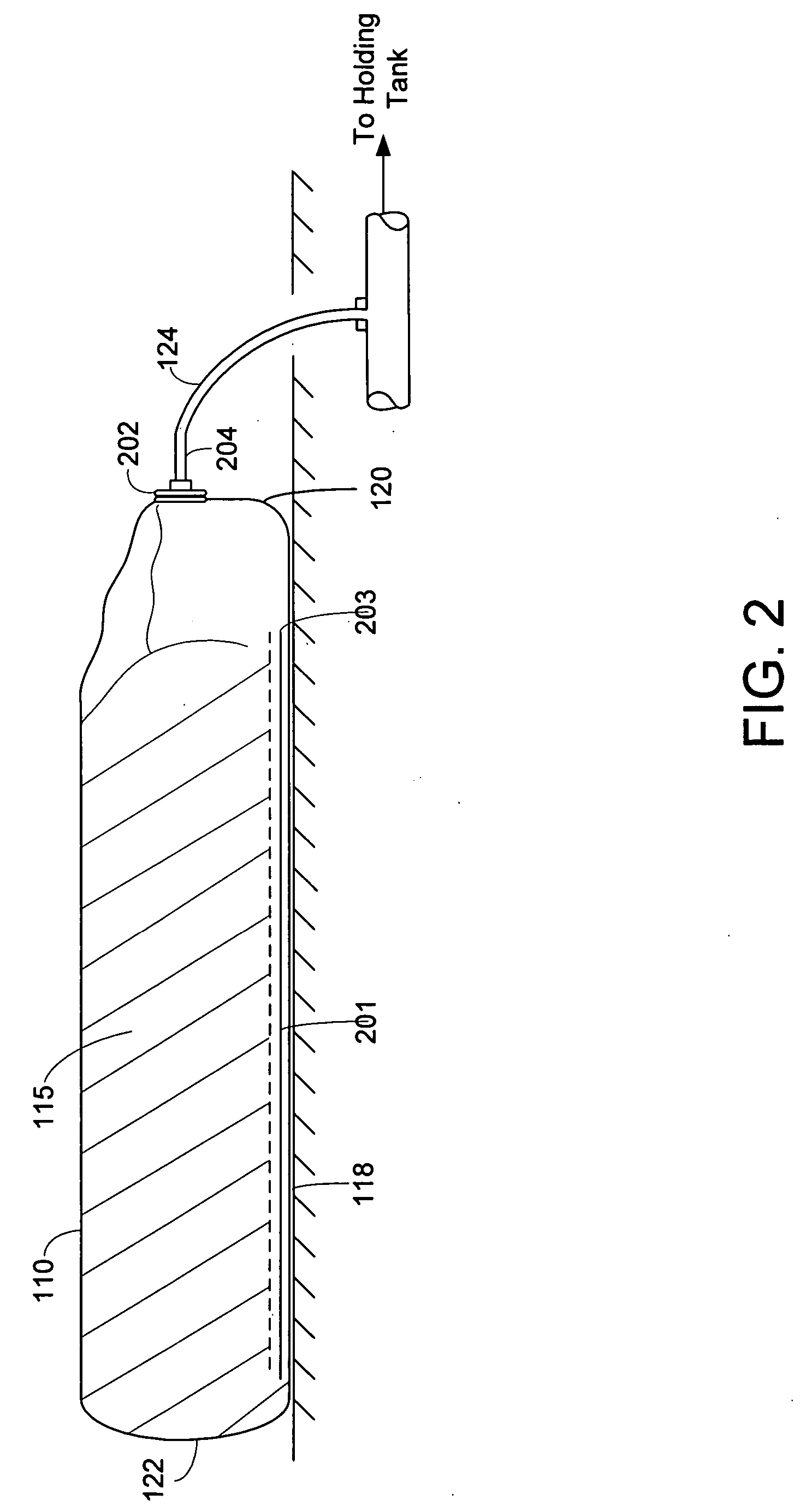Organic waste material treatment system
a waste material treatment and organic technology, applied in the field of waste material processing, can solve the problems of high energy consumption during material processing, noxious gas emissions, runoff from the compost facility, etc., and achieve the effects of reducing the net energy requirement associated, rapid and inexpensive process scaling, and reducing emissions
- Summary
- Abstract
- Description
- Claims
- Application Information
AI Technical Summary
Benefits of technology
Problems solved by technology
Method used
Image
Examples
Embodiment Construction
[0016]FIG. 1 symbolically depicts the major components of an organic waste treatment system 100 implemented in accordance with an exemplary embodiment of the invention. A flexible hydrolysis vessel 110 contains a volume of organic waste material 115 having relatively high moisture content and density. The hydrolysis vessel 110 has pliable walls formed from a polymer or other material that is substantially impermeable to gases and liquids. The ends of vessel 110 are closed and sealed to provide an anaerobic environment for the hydrolysis of the organic waste material 115. Details regarding the construction of vessel 100 are set forth below in connection with FIG. 2.
[0017] The vessel 110 rests on a supporting surface 118, which is sloped along the longitudinal axis of vessel 110 such that the bottom portion of a first end 120 of the vessel 110 is situated lower than the bottom portion of the opposite end 122 of the vessel. This condition causes liquids produced during anaerobic hydro...
PUM
| Property | Measurement | Unit |
|---|---|---|
| length | aaaaa | aaaaa |
| length | aaaaa | aaaaa |
| particle size | aaaaa | aaaaa |
Abstract
Description
Claims
Application Information
 Login to View More
Login to View More - R&D
- Intellectual Property
- Life Sciences
- Materials
- Tech Scout
- Unparalleled Data Quality
- Higher Quality Content
- 60% Fewer Hallucinations
Browse by: Latest US Patents, China's latest patents, Technical Efficacy Thesaurus, Application Domain, Technology Topic, Popular Technical Reports.
© 2025 PatSnap. All rights reserved.Legal|Privacy policy|Modern Slavery Act Transparency Statement|Sitemap|About US| Contact US: help@patsnap.com



